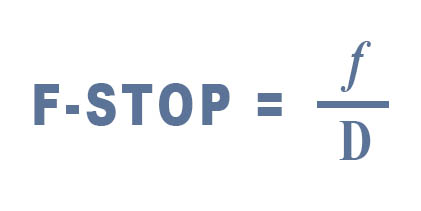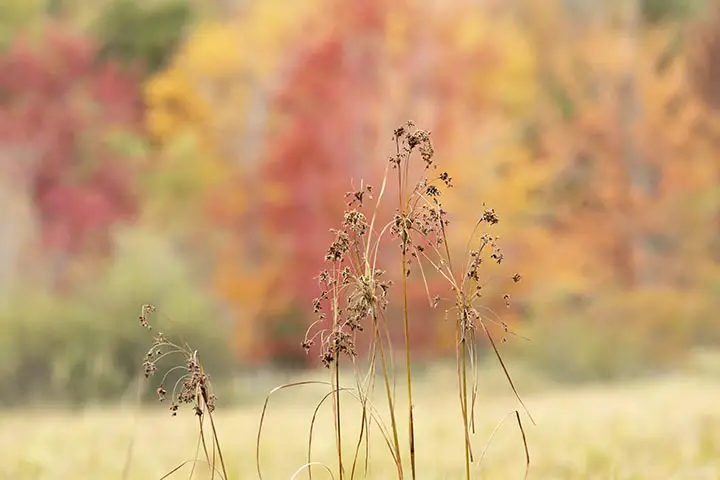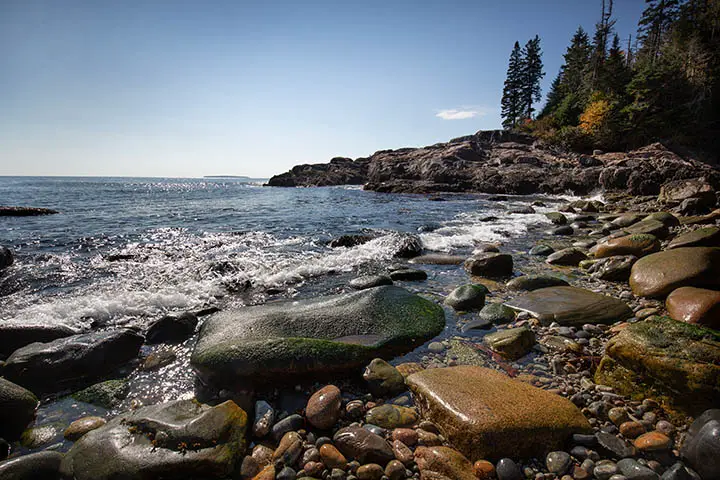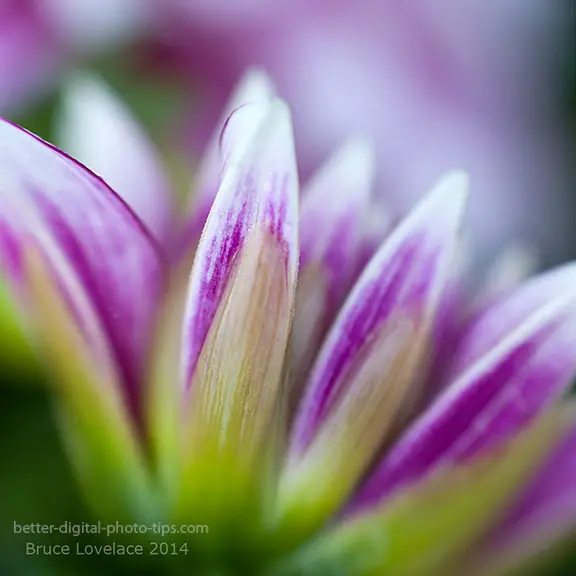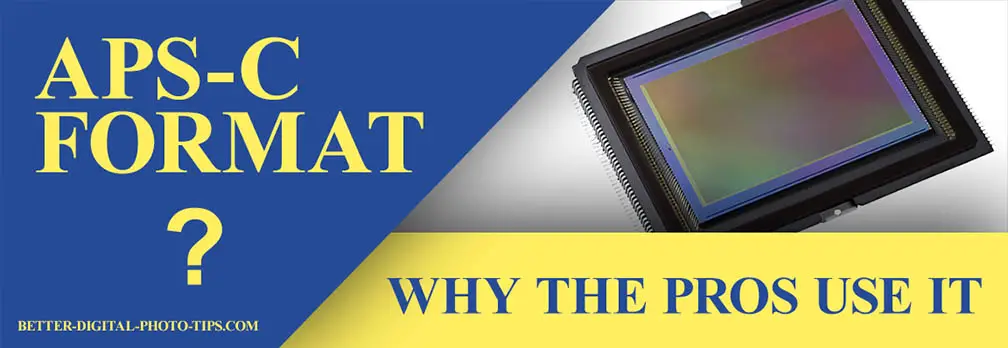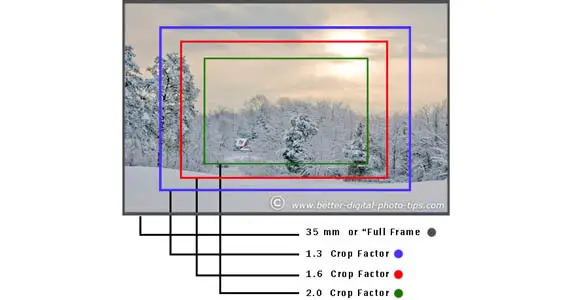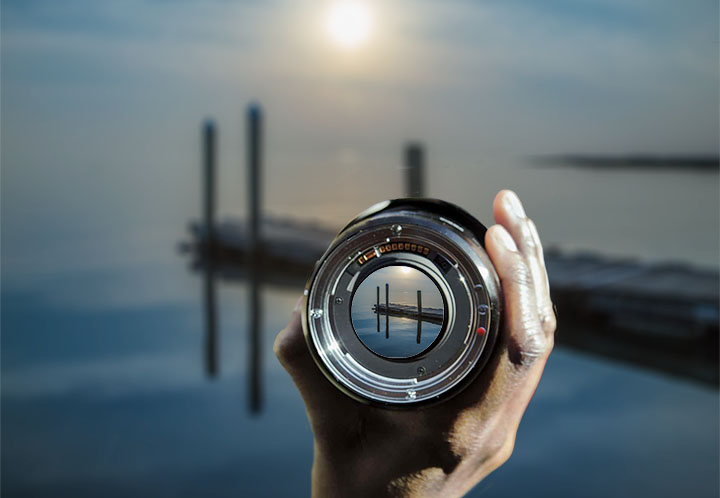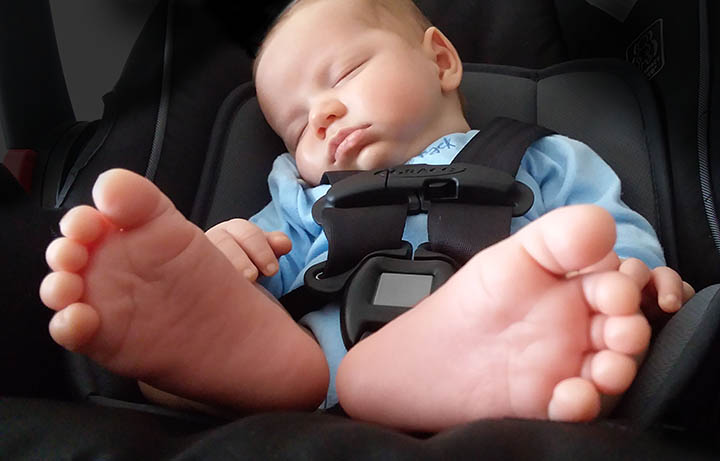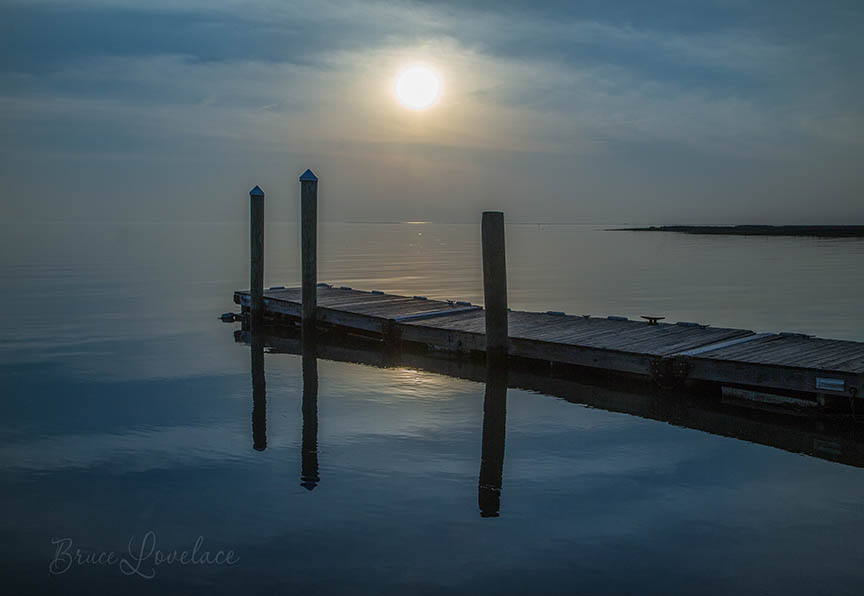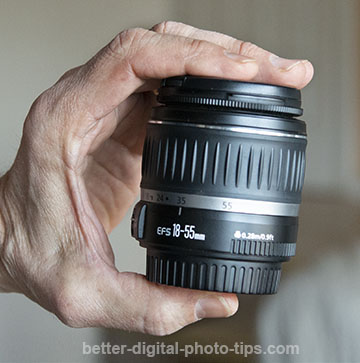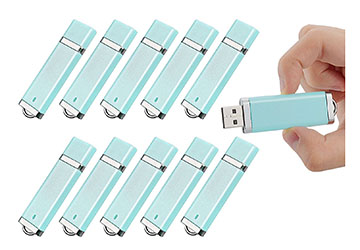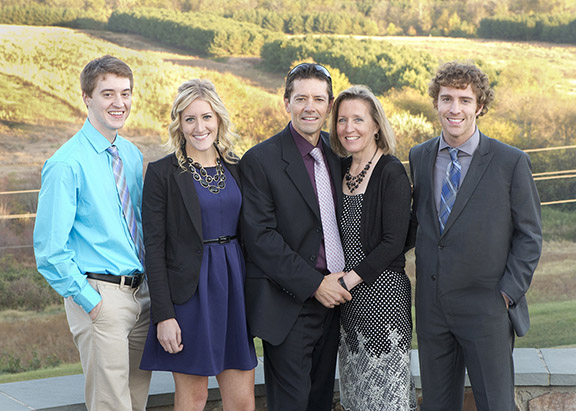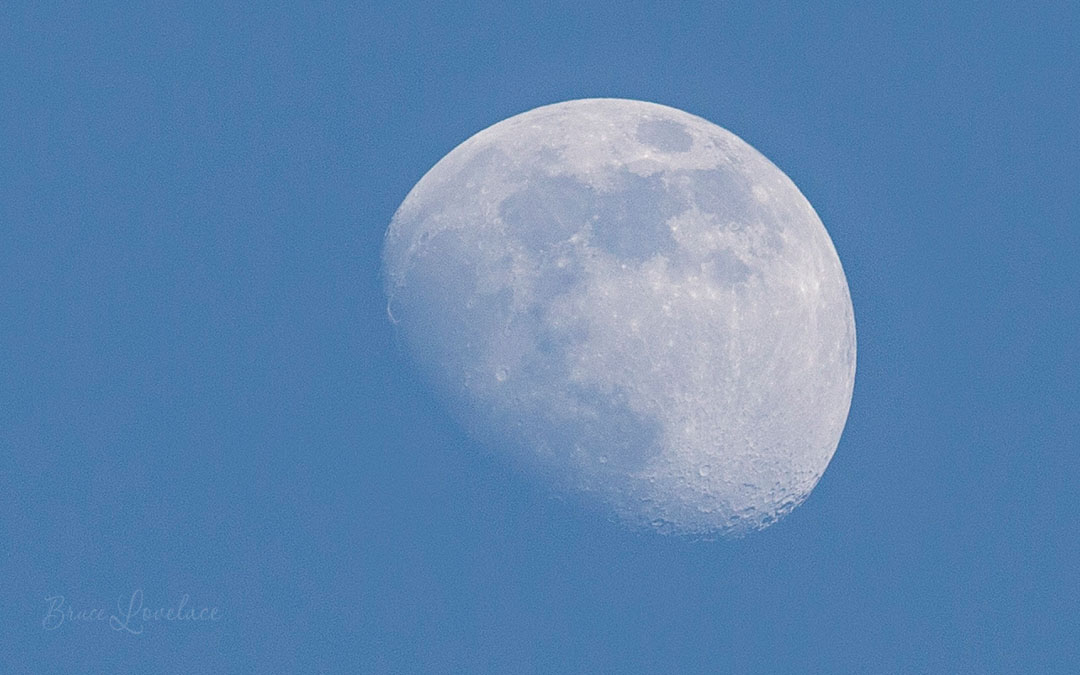HOW TO POSTS: LIGHTING AND COMPOSITION
definition of f/stop
WRITTEN BY: BRUCE LOVELACE
UPDATED: DECEMBER 2, 2023
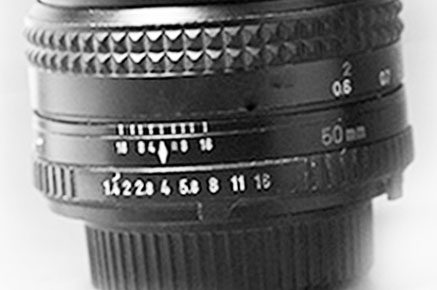 Lens set a f/4
Lens set a f/4The simple definition of f stop is that it's the number that refers to how wide-open the camera lens is set. That's very important because the size of that opening, or aperture, determines how much light makes it to your sensor and what ranges of things in your scene is in sharp focus.
A smaller number like f/4 means the lens opening is relatively big and a big f/stop number like f/11 means the lens opening is fairly small.
A deeper understanding of the definition of f stop can be found by looking at the other ways you can describe f/stop. F-stop is also referred to as "f-number", "f-ratio," "relative aperture," or "focal ratio."
That's because it is a number, it does represent a ratio, and it is relative. It's actually a fraction too. This all seems complicated, but I am just poking a little fun at the use of our crazy language.
It's a number that is the ratio of the lens opening compared to the focal length of the lens.
As an example, if the diameter of the lens opening is 25mm and it's a 50mm lens, then it's 50/25 (50 divided by 25) or f/2.
 Smaller f-stop numbers are larger lens openings
Smaller f-stop numbers are larger lens openingsThe word stop in the term "f-stop" was the physical stopping points where lens diaphragms engaged at set increments, such as f-2 f-2.8 f4.0 f5.6 f-8. That was back in the old days when lens were mechanically and not electronically controlled.
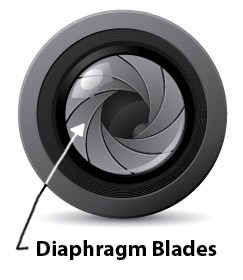
- Now diaphragms are step-less.
- There are blades within the lens.
- Usually more blades give a smoother bokeh.
- They are more accurate and are expressed digitally such as f-4.7 or f-8.3.
importance of understanding of f/stop
How the f-stop affects your photograph is is really what matters, not the actual number itself. Exposure, depth of field, and sometimes image quality are effected by what f stop you choose to use.
1. photo exposure
Each doubling of the f-stop number equates to only 1/4 of the amount of light reaching your sensor. So changing your f-stop from f-4 to f-8 reduces the size of the lens opening to only allow 1/4 the amount of light in.
Depending on the automatic mode your camera is set on, it will change the shutter speed or ISO setting to compensate so your exposure will still be correct. If you are on manual, you have the control to make the settings appropriate for the correct exposure.
Here is more on the topic of of proper photo exposure and the exposure triangle.
2. photo quality
Image quality is fairly constant through the range of what f-stops you use with modern lenses, but there are issues, usually at both extremes of the f stop range.
At the biggest f-stop numbers (the wide-open apertures) image sharpness is sometimes compromised a bit. At the highest f-stop numbers ( the smallest lens openings), diffraction is usually more apparent.
For the casual photographer, these lens shortcomings are barely noticeable. They do exist though and on an image-quality basis only, the best results are often obtained by closing down two or three f numbers from wide-open lens settings.
3. depth of field
This is the the one you really want to understand. The f/stop YOU choose affects what parts of your photo are in focus. A good understanding of depth of field related to what your f-stop is separates the advanced and pro photographers from the amateur ones.
Using smaller f numbers will result in more depth of field (a larger range of objects in your photograph in good focus). Using large f numbers results in shallow depth of field. It's not always desirable to have a large depth of field. Here are 3 articles on specific aspects you'll enjoy reading to deepen your understanding of f/stop, depth of field and its importance to your photography.
Here is a table showing the sequence of common, single f-stop numbers. Note that each subsequent step upward results in HALF the amount of light passing through the lens for any given shutter speed.
| APERATURE VALUE | 1 | 2 | 3 | 4 | 5 | 6 | 7 | 8 | 9 | 10 | 11 | 12 | 13 | 14 | 15 | 16 |
|---|---|---|---|---|---|---|---|---|---|---|---|---|---|---|---|---|
| f-Stop/No. | 1.4 | 2 | 2.8 | 4 | 5.6 | 8 | 11 | 16 | 22 | 32 | 45 | 64 | 90 | 128 | 180 | 256 |
more Question and Answers about f/stops
WHAT F/STOP IS THE HUMAN EYE? In really bright situations, when the pupil is constricted, its f-stop is about f/8.3. In really dark situations, when the pupil is fully dilated, it's about f/2.
WHAT F-STOP SHOULD I USE IN LANDSCAPE PHOTOGRAPHY? Use a high f/stop number like f11 or f16 to get everything in your landscape shot in focus. That gives you a deep depth of field like we discussed earlier. Stopping your lens down to the absolute smallest aperture possible can result in a little diffraction and a small loss of sharpness.
WHAT F/STOP SHOULD BE USED FOR PORTRAITS? This is a little more tricky. For portraits of individuals ist an easy answer. Use a small f-stop number (large aperture) like f/4 or f/5.6 to make the background go blurry on purpose. With family portraits, you may have to stop down a bit to f/8 to make sure you get enough depth of field to have your subjects, closest to farthest, all in focus.
WHAT'S THE BEST F-STOP FOR MACRO PHOTOGRAPHY? The range of things is focus is severely limited when you're shooting up-close with macro photography. Most beginners and photo enthusiasts try to get as much in focus as possible when they shoot macro. You should use a large f-stop number (small lens opening) like f16 to get your subject all in focus.
BEST F/STOP FOR LOW LIGHT PHOTOGRAPHY. When you're shooting in dark situations, you need to make adjustments to let in as much light into your camera as possible so that your photo is not too dark. Use a wide open aperture, small f-stop number.
The technical definition of f stop can simple be remembered as the size of the lens opening compared to the size of the lens. The important things to know about what is f stop are its effects on depth of field, exposure, and image quality.
The reason large f/stop numbers (like f/11 or f/16) are small lens openings and small f/stop numbers (like f/2 and f/2.8) are big lens openings is because they're actually fractions.
I hope you found this article on the definition of f stop helpful. Find other useful posts using the search box below.
Search for a new topic on this site:


ABOUT BRUCE LOVELACE
Bruce is the publisher of this website. He is the author of the book "Improve Your Photography Instantly." Read more on Bruce on his Bio Page. He's been known as The Traveling Photographer ever since 1994. Read more about this website.
View some of Bruce's photos on Instagram. Visit the Facebook Page. Watch him on YouTube. Bruce runs photo workshops for kids and adults, and provides one-on-one photography coaching.
Digital Photography Education Location on Google My Business
